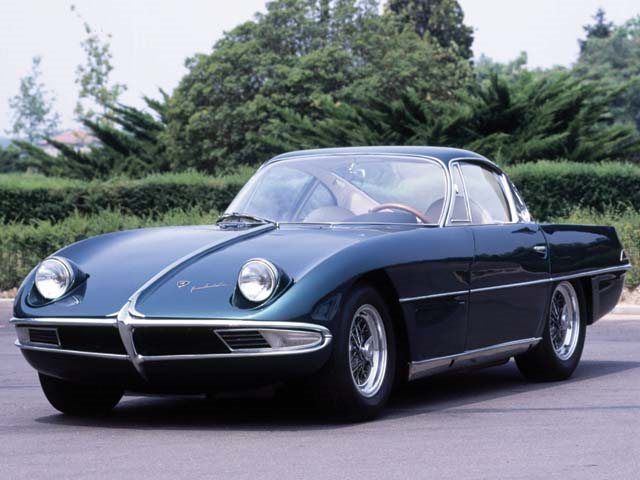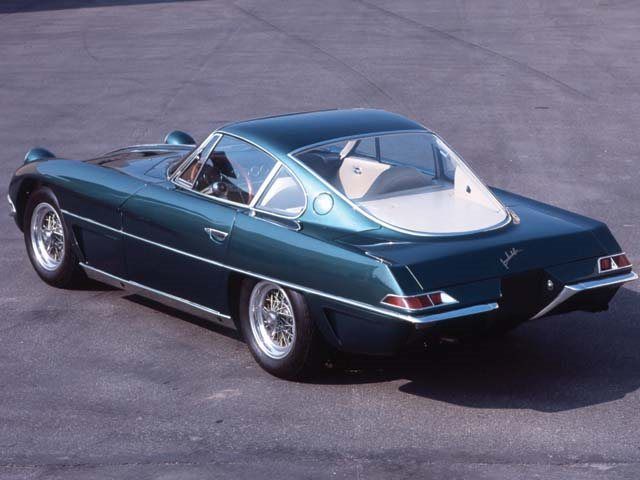
Lamborghini had been building cars for a few years before it ever built its first actual supercar. It's strange to think of this, since Lamborghini has more or less set the standard for supercars since the debut of the Miura in 1966, but the company's founder, Ferruccio Lamborghini, never wanted to directly compete with Ferrari. As he saw it, GT cars had a bigger market and a bigger profit margin. Thus, the early Lamborghinis were a very different sort of car than the ones that came just a few years later.
The first car produced by Lamborghini was a GT called the 350GT. This would evolve a couple of years later into the 400GT, but this was essentially the same car, just with an enlarged engine. The 350GT actually came close to becoming a supercar. The first prototype, called the 350GTV, was a hardcore performance machine. The 3.5-liter V12 engine, designed by Giotto Bizzarrini, was essentially a racing design. It produced up to 400 horsepower and redlined way up at 11,000rpm. That's a lot by today's standards, but in 1963 it was unthinkable for a road car.
So when Bizzarrini left the company while the prototype was still under development, the project was taken over by Paolo Stanzani and Bob Wallace (one of the people named so far in the story wasn't Italian, see if you can guess which one). Their first job was to finish the 350GTV prototype for the 1963 Turin Motor Show, and then to immediately set about making changes to the car in order to make it commercially viable. The engine obviously needed to be changed, a screaming 11,000rpm monster that would need an engine rebuild every few thousand miles just wasn't practical.
The 11.0:1 compression was lowered to 9.4:1, the cam profiles were made less aggressive and the dry sump system with a more traditional wet sump. This was all done with the goal of allowing the car to go 40,000 hard miles before needing major engine servicing. The engine now produced 270 horsepower, and the chassis was similarly softened for actual road use. It debuted at the Geneva Auto Show in 1964 and was immediately well received. Just 135 units of the 350GT were built, and to give you an idea of how much the auto industry has changed, even for a relatively small company like Lamborghini, this was considered a major success.
However, although the 350GT did not compete directly with Ferrari's contemporary 250 line of supercars, it did compete with their 275 grand tourer, and that's a car for which Ferrari found nearly a thousand buyers. So in 1966, Lamborghini upped the ante with the 400GT. This had some cosmetic evolutions from the 350GT, but the big difference was the engine. This had been enlarged to 4.0-liters and now produced 320 horsepower. Though the 350GT had been more or less universally praised as serious competition for the Ferrari, the 400GT proved to be even more popular, and some 350GT buyers even had their cars retrofitted with the 4.0 engine.
The practice of simply enlarging Bizzarrini's design worked so well than Lamborghini continued to do the same thing right up until last year, when they debuted a new V12 design with the Aventador. Even though the 350GT was toned down quite a bit from the original concept, it still placed a bit more emphasis on performance than most GT cars usually do. In retrospect, it seems to be the direction the company was moving anyway. Italians also can't seem to help themselves building fast cars, and that's one of those things we love about them so much. To be fair, the Ferrari 275 also put a lot of emphasis on performance.
They both competed with the Aston Martin DB5, a car which offered up more power than the 350GT and more comfort as well. Hardly surprising that the DB5 sold almost as many units as the two Italian cars combined. The difference between the 350GT and the DB5 highlights how the Brits and Italians take slightly different approaches to the idea of a GT. The difference gets even more dramatic when you compare the 350GT to the Bentley S3 Continental of the same era. You could even extend the comparison to the current Continental GT and the Ferrari 599 and see that these different philosophies are still in place.
But that's ok, no car can be all things to all people, and the competition between the two nationalities of cars probably helps to keep the British cars from getting too soft and the Italian cars from turning into outright sports cars. That ability to meet up in the middle is what GT cars are all about. The 350GT/400GT might not have big a big seller or changed the perception of what a GT car is, but it is the car which launched one of the biggest names in exotics and simultaneously showed Ferrari that not even its road cars were invincible.



